I know natto is good for my health, but I can’t eat it because of its unique smell and stickiness.
However, I want to take in the nutrients contained in natto.
For you, here are some foods that can be substituted for natto.
INDEX
What are the nutrients in natto?
Natto is a traditional Japanese food made by fermenting soybeans with bacillus natto.
It contains the following excellent nutrients.
- Protein:
Nutrients are necessary for building muscles and bones, and natto is rich in high-quality protein. - Vitamin K:
Involved in blood clotting and helps maintain healthy bones. Natto is one of the highest in vitamin K content among plant foods. - Nattokinase:
An enzyme unique to natto, effective in preventing blood clots. It makes blood thinner. - Dietary fiber:
Natto helps regulate the intestinal environment and relieve constipation. Especially rich in soluble dietary fiber.
The charm of natto is that you can easily consume these nutrients, but if you are not fond of natto, it is not so easy to eat.
But don’t worry, there are foods that can be substituted for natto.
Foods that can be substituted for natto
1. Tempeh
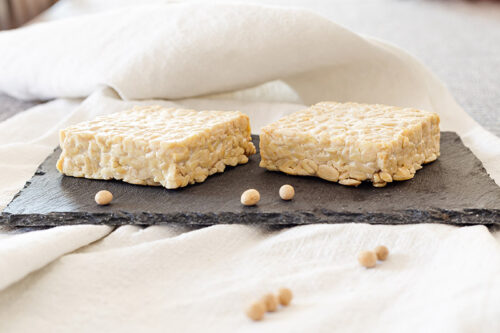
Tempeh is a fermented food that originated in Indonesia.
It is made by fermenting soybeans with a bacterium called “tempeh bacteria” and is rich in high-quality protein, just like natto.
Since tempeh is made by fermenting whole soybeans, the nutrients of the soybeans remain intact.
Fermentation also makes the soybeans more digestible and absorbable, so the protein is used more efficiently.
Tempeh is also rich in isoflavone, an ingredient unique to soybeans. Isoflavone has a function similar to that of estrogen, a female hormone, and is expected to be effective in alleviating menopausal symptoms and preventing osteoporosis.
Unlike natto, it has little smell and consistency, making it easy to eat even for those who do not like natto. For seasoning, we recommend simply using shio koji or soy sauce koji. It is also recommended to use it instead of meat.
2. Miso

Miso is another food made from fermented soybeans. It is made by fermenting soybeans with yeast and adding salt.
The main nutrients in miso are protein and dietary fiber. Like natto, it contains good quality protein. In addition, because it is a fermented food, it is expected to help regulate the intestinal environment.
Miso contains peptides produced by the fermentation of koji mold. These peptides are believed to have the effect of lowering blood pressure, suggesting that they may be useful in preventing hypertension.
In addition, since miso is a fermented food, the lactic acid bacteria contained in miso can be expected to help regulate the intestinal environment. Lactobacilli increase the number of good bacteria in the intestines and help boost the immune system.
Miso is a versatile seasoning that can be used in a variety of dishes such as miso soup, miso stir-fry, and miso dressings. Just by making miso soup a daily habit, you can easily consume protein and dietary fiber.
3. Tofu
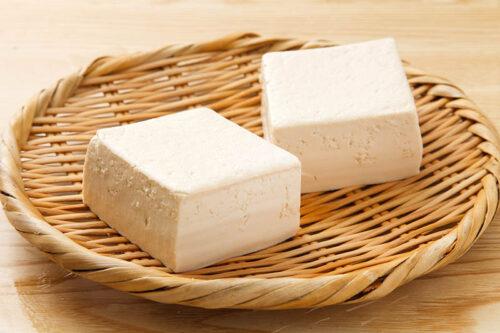
Tofu is a food made from soybeans and contains high quality protein. This traditional food is made by soaking soybeans in water, mashing, and boiling.
Tofu protein is highly digestible and absorbable. It is also known as a healthy food due to its low fat content.
Tofu is also rich in soy isoflavones. Isoflavones work similarly to the female hormone estrogen and are expected to be effective in alleviating menopausal symptoms and preventing osteoporosis.
Tofu is also a low-calorie food, making it a good choice for dieters. Using tofu as a substitute for meat is a great way to consume protein while reducing calories.
Tofu can be used in a variety of dishes such as chilled tofu, marbo tofu, and hot tofu. I also recommend making tofu steaks.
4. Edamame (soybeans)
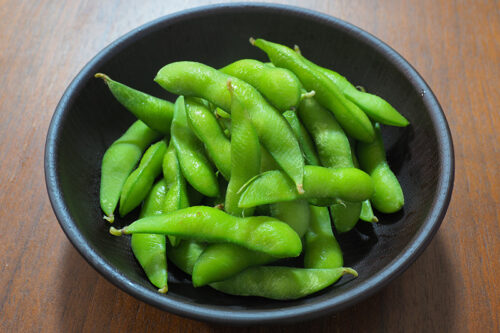
Edamame is boiled immature soybeans. It is packed with soybean nutrients and is rich in protein, dietary fiber, and vitamins.
In particular, they are high in B vitamins. B vitamins are nutrients that help relieve fatigue and maintain healthy skin. It is also rich in dietary fiber, which helps regulate the intestinal environment.
Edamame also contains saponin, a type of polyphenol. Saponin is believed to have the effect of lowering cholesterol, and it has been suggested that it may be useful in preventing arteriosclerosis.
Edamame can be eaten simply by boiling, making it a tasty snack with beer. It is recommended as a healthy snack that provides protein and dietary fiber.
5. Blue fish
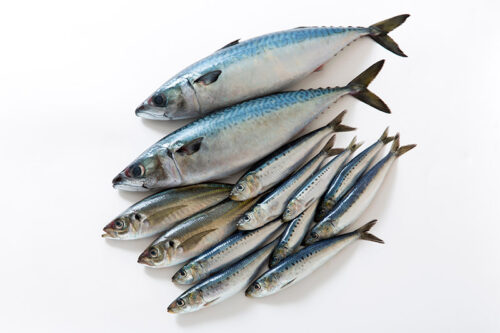
Blue fish is rich in unsaturated fatty acids such as DHA and EPA. These help to thin the blood and have a similar effect to that of Natto’s Nattokinase.
In particular, DHA is known to help maintain brain health. It is believed to be effective in improving memory and concentration, and is also an important nutrient for children’s development.
EPA is also believed to lower neutral fat in the blood, suggesting that it may be useful in preventing atherosclerosis.
Bluefish are also rich in protein. In particular, lean fish such as salmon and tuna contain high amounts of high-quality protein.
Eating blue fish such as salmon, mackerel, sardines, and horse mackerel two to three times a week provides an efficient intake of DHA and EPA. If you don’t like fish, try tsumire soup or fish cutlets made with fish.
6. Soybean Meat
 Soybean meat is a plant-based meat substitute made from processed soy protein. It is rich in protein and also contains fiber.
Soybean meat is a plant-based meat substitute made from processed soy protein. It is rich in protein and also contains fiber.
Soybean meat can be used in place of meat for a healthy meal. In particular, dishes made with soybean meat contain fewer calories than those made with meat.
Soybean meat also contains soy isoflavones. Isoflavone has a function similar to that of the female hormone estrogen and is expected to be effective in alleviating menopausal symptoms and preventing osteoporosis.
Soybean meat can be used in a variety of dishes such as hamburgers, curry, and stews. By using soybean meat instead of meat, you can expand your diet.
7. Cooked soybeans
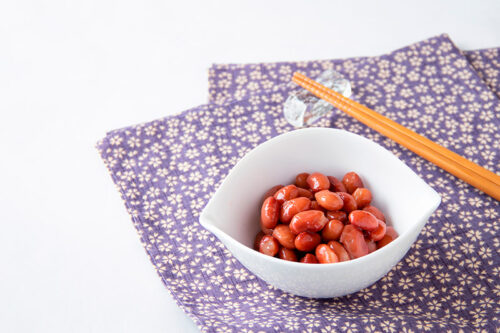
Nimame is a food made by putting soybeans back in water and simmering them until tender. It is rich in protein and fiber and is delicious not only eaten as is, but also in salads and soups.
Boiled soybeans are also rich in soy isoflavone. Isoflavone has a function similar to that of estrogen, a female hormone, and is expected to be effective in alleviating menopausal symptoms and preventing osteoporosis.
In addition, boiled soybeans are a low-calorie food, making them a good choice for dieters. By using boiled soybeans in place of meat, you can consume protein while reducing calories.
Boiled soybeans can be used in a variety of dishes such as salads, soups, and stir-fries, in addition to being eaten as is. It is also recommended to make and keep it as a reserve dish.
8. Black soybeans
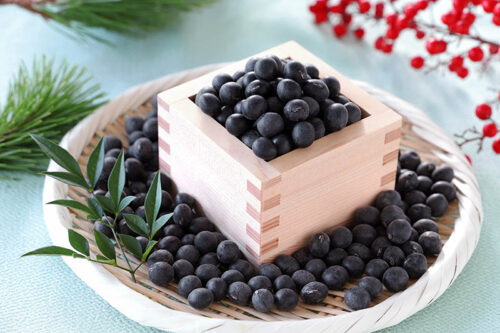
Kuromame is a food made by boiling black soybeans. It is characterized by its rich content of anthocyanins, a type of polyphenol. Anthocyanins are expected to have antioxidant properties and help maintain healthy eyes.
Black beans are also rich in protein and dietary fiber. In addition, saponins contained in black beans are believed to have a cholesterol-lowering effect, suggesting that they may be useful in preventing arteriosclerosis.
Black beans are not only eaten as they are, but are also used as an ingredient in confections. Sweets made with black beans are both healthy and delicious.
Black bean tea is also good.
9. Soy milk
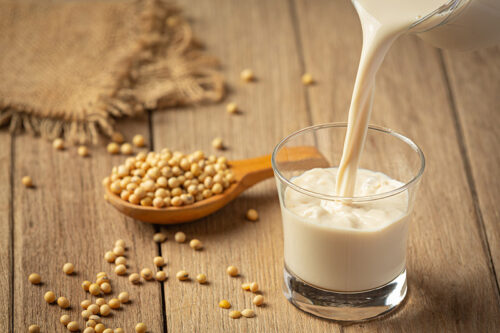
Soy milk is a vegetable milk made by soaking soybeans in water and mashing them. It is rich in protein, dietary fiber and vitamins.
(Soy milk is rich in protein, fiber, and vitamins (in English, it is called SOY MILK = soy milk).
Soy milk is also rich in soy isoflavone. Isoflavone has a function similar to that of estrogen, a female hormone, and is expected to be effective in alleviating menopausal symptoms and preventing osteoporosis.
Soy milk is also a recommended drink for those who cannot consume dairy products. By using soy milk instead of cow’s milk, even those who do not like dairy products can consume soy nutrients.
Soy milk can be used not only for drinking on its own, but also for cooking. You can use soy milk in soups, stews, desserts, and many other dishes.
Soy milk hot pot is also good in winter!
Nattokinase supplements are also recommended
For those who do not like natto, natto supplements are also recommended.
Natto supplements are packed with nutrients found in natto.
Like natto, they are rich in protein, dietary fiber, vitamin K, and other nutrients, so even those who do not like natto can easily consume natto nutrients.
Taking natto supplements can be expected to increase the amount of beneficial bacteria in the intestines and enhance immunity.
Nattokinase, an enzyme contained in natto, is considered effective in preventing blood clots, and taking these supplements may improve blood flow and help prevent blood clots.
Natto supplements do not have the odor or consistency characteristic of natto, making them easy to take even for those who do not like natto.
It is also portable, so you can easily take natto nutrition when traveling or on the go.
Summary
Even if you do not like natto, there are many foods that can replace natto, such as tempeh, miso, tofu, edamame, green fish, soybean meat, cooked soybeans, black soybeans, and soy milk.
By skillfully incorporating these foods, you can efficiently consume the nutrients contained in natto.
Natto kinase supplements and natto supplements are also recommended options for those who do not like natto.
By utilizing these supplements, the health benefits of natto can be easily obtained.
However, it is important to include both foods and supplements as part of a well-balanced diet.
Do not rely too heavily on specific foods or supplements, but rather combine a variety of foods to maintain a nutritionally balanced diet.
Even if you do not like natto, make good use of foods and supplements that can replace natto to lead a healthy life. They will surely support your health.
Have a good life!




Comment